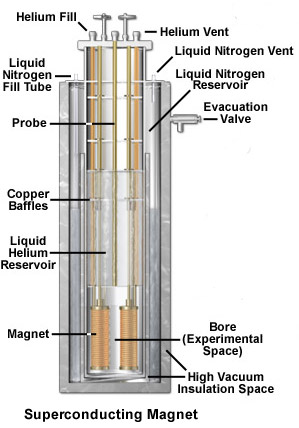Magnetic Levitation
Uses of magnetic Levitation




Some ways to achieve levitation
The fundamental force of magnetism is some 10 to the 37th power stronger than the fundamental force of gravity. Thus, with a magnetic field of sufficient intensity, one should be able to negate the effect of of gravity in a local region and effect levitation. It follows that it may also be used to effect artificial gravity in a space ship environment. In fact. levitation has been done in many universities around the world for the last decade. It can be effected in several ways and some of it involves levitating objects we don't normally associate with magnetic interaction. These include, but are not limited to water and living animals.
The principle of magnetic levitation is based on the diamagnetic properties of hydrogen and as living bodies are mostly water and water is two parts hydrogen per molecule, this is the basic reason why magnetic levitation can work. This can be made to work even to the point of overcoming the paramagnetic properties of ferrous materials in living bodies such as in chloroplasts and hemoglobin used in photosynthesis and red blood cells respectively. As hydrogen is far more abundant, magnetic levitation can be used to levitate what is normally considered to be non magnetic materials. But the magnetic field required to cause this is necessarily intense in order to negate and overcome the local gravitational field. There are a number of ways to accomplish this, that is, by using superconducting and chilled permanent magnets and by building large sized electromagnets. The latter is used to create a solenoid in which living animals and water can be levitated, or, more accurately, to be suspended within a magnetic field within the gravitational field. The field strength required to do this with water drops and small animals like mice and frogs typically is measured at 16 Teslas. It requires a lot of power to generate this kind of field strength. To levitate something the size of a human being requires far more input.
There is another way to levitate materials in a magnetic field by employing the use of gyroscopic stability. This is one of the ideas behind the levitating toy called the Levitron. In this case, a much weaker electromagnetic or permanent magnetic field acts as the base in which the spinning magnetic toy levitates. The gyroscopic stability is used to keep two like poles oriented facing one another and creating the repulsion necessary to effect magnetic levitation. For magnetically levitated flying saucers, this is based on part on this as some have been seen spinning in whole or in part. The region of stability in this configuration is very narrow, so stability is crucial. To effect this only using the earth's magnetic field, also requires strong local spacecraft fields and a stable geomagnetic field, which of course, during a magnetic flip within the earth, is not the current case.
In yet another example, magnetic levitation is effected by a chilled superconductor and a rare earth super magnet. The superconductor itself is not magnetic, but when chilled to near absolute zero, becomes what can be called a magnetic mirror. The magnet induces the reflecting field in the superconductor and this is what creates the conditions for levitation. This is what is referred to as the Meisner effect. Recently, with advances in superconductors, the necessity for being close to absolute zero has been reduced. Researchers are hoping to find the right combination of materials to create a room temperature superconductor.
Uses for magnetic levitation include the development and use of magnetic bearings. The super powerful permanent magnets being manufactured today make the idea of large scale magnetic bearing feasible for large scale vertically mounted wind powered generators. The bearings eliminate surface friction that is common with ball bearings and bushings. Efficiency for the generation of power is substantially increased. The need for lubricants is eliminated. For the current period, this appears to be the best application for magnetic levitation.
Superconducting Magnetic levitation
diamagnetic levitation
More information on magnetic levitation and experimental resources









